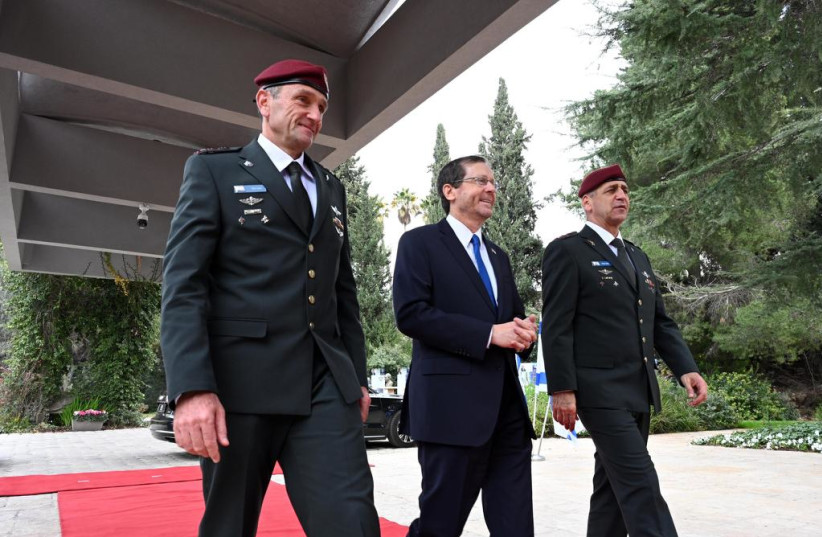In some recent operation, the IDF’s adversaries were in for a surprise.
They were about to aim and fire a precise form of weaponry at IDF forces in the field when suddenly the IDF could hear the enemy forces asking themselves, “Why aren’t we shooting? Why aren’t we shooting?”
The Jerusalem Post has learned that in this still mostly classified instance in which the IDF’s electromagnetic spectrum warfare center was used to disable the enemy forces ability to function, neither the enemy forces nor the IDF forces who were saved had a clue what had transpired.
This is part of the frustration of being part of this elite classified force, that its motto is to act without receiving any glory.
Yet, with the unit taking a higher profile role in this month’s IDF two-week-long multi-front drill Firm Hand, a senior IDF official from the unit granted a rare interview to the Post.

The unit carries out a variety of activities, but new kinds of direct jamming or confounding an enemy's communications is certainly a key aspect.
While both the offensive and defensive capacities of the unit are growing, the offensive capacities are growing at an even faster rate, the official told the Post.
According to the official, “The purpose of the unit is to enable total control over the electromagnetic spectrum, which allows much freer action by the IDF’s various forces in the field.”
“Conceptually, the IDF has recognized that technological advances impact everything. It happens even in the civilian sector where a tractor also works on GPS using a computerized device,” he said.
For example, he said that someone could be traveling and suddenly their radio may pick up the wrong channel and this could interfere with their ability to receive orders and updates from their commander – that is unless the unit helps protect their communications and quickly resolve any disruptions.
During “Firm Hand”, the official said the unit “delivered significant results for the IDF’s broader goals, taking control of the electromagnetic spectrum at both strategic and tactical levels.”
According to the official, feedback from soldiers who participated in the drill has been “that they feel a conceptual paradigm shift has occurred,” providing them new decisive tools in warfare.
“If in the past, discussion about the electromagnetic warfare desk was mostly confined to within the unit, now a broad range of top commanders initiate discussions and planning sessions related to the issues on their own,” said the official.
The official said the IDF recognizes that our “enemies are always advancing [ in electronic warfare as well], but the IDF knows how to handle such threats. We are ready for any scenario. The challenges loom large, but we have the personnel who can make order out of everything.”
The bigger platform given to the unit in mid-2023 did not happen overnight
The official stated that “managing operations in the electromagnetic spectrum was given a much broader platform in 2018 by then-IDF chief Aviv Kohavi. Until then it had been swallowed by other areas of electronic warfare.”
“Now when the air force attacks, it can be assumed that the electromagnetic warriors are involved in some way, the same with the navy and the same on land with operations by tanks and armored personnel vehicles,” said the official.
Next, the official explained that "being given a larger platform within the IDF, means also taking a higher level of responsibility.”
This means that “the electromagnetic warfare center is not just a side participant, but is now a leading co-participant in most warfare operations.”
The electromagnetic warfare center is part of the broader IDF Information and Communications Technology Command.
With its new status, the electromagnetic warfare center now is a much bigger part of the long-term force-building plans for the IDF and is taken into account far more at multiple and earlier levels of operations planning.
Now the unit is “involved from the earliest planning stages until its [weapons] are unleashed,” said the official.
Unlike in the past, where the unit’s forces were split up into all sorts of smaller groups, now the unit has a centralized command and planning body to address both its day-to-day and long-term needs.
There are also officers from the center installed in each of the forward command posts of the IDF’s Northern, Southern and Central commands. The centralized command also liaisons directly with key related ministries such as the Defense Ministry and the Communications Ministry, said the official.
In addition, with the electromagnetic warfare center’s forces doubling, the official said that the IDF is now building a variety of new career positions and paths to enable future increases in force buildup and ways to keep specially trained officers within the IDF for a longer period of time.
Another initiative that has been going on for about 18 months has been new efforts to engage select high school students in various kinds of pre-IDF training in preparation for potential roles with the electromagnetic warfare desk.
The growth of the unit came from various working papers of senior officers at the center some years ago whose names still cannot be released because they are still working within the center and in classified capacities.
Part of doubling the forces for the unit has meant that other units within the IDF Information and Communications Technology Command have seen reductions in their human resources.
The first larger trainee class for the unit became active in operations, including sometimes on the frontlines as of 2022.
The Post has learned that the unit’s capabilities were used during the May 2021 Guardian of the Walls conflict with Gaza. In a variety of situations, Hamas or Islamic Jihad operatives in the field unexplainably lost touch with their commanders.
